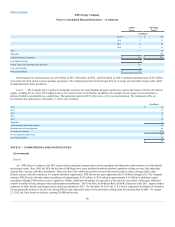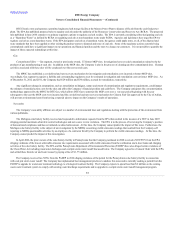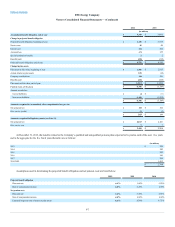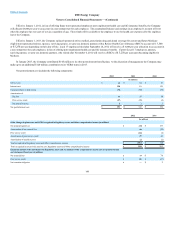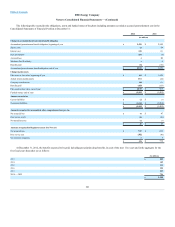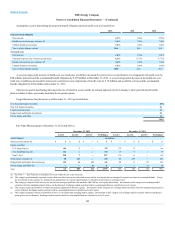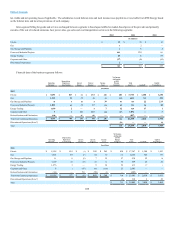DTE Energy 2012 Annual Report Download - page 101
Download and view the complete annual report
Please find page 101 of the 2012 DTE Energy annual report below. You can navigate through the pages in the report by either clicking on the pages listed below, or by using the keyword search tool below to find specific information within the annual report.
Table of Contents
(f) This category includes corporate bonds from diversified industries, U.S. Treasuries, and mortgage-backed securities. Pricing for investments in this category is obtained from quoted
prices in actively traded markets and quotations from broker or pricing services. Non-exchange traded securities and exchange-traded securities held in commingled funds are
classified as Level 2 assets.
(g) This category utilizes a diversified group of strategies that attempt to capture financial market inefficiencies and includes publicly traded debt and equity, publicly traded mutual
funds, commingled and limited partnership funds and non-exchange traded securities. Pricing for Level 1 and Level 2 assets in this category is obtained from quoted prices in
actively traded markets and quoted prices from broker or pricing services. Non-exchange traded securities held in commingled funds are classified as Level 2 assets. Valuations for
some Level 3 assets in this category may be based on limited observable inputs as there may be little, if any, publicly available pricing.
(h) This category includes a diversified group of funds and strategies that primarily invests in private equity partnerships. This category also includes investments in timber and private
mezzanine debt. Pricing for investments in this category is based on limited observable inputs as there is little, if any, publicly available pricing. Valuations for assets in this category
may be based on discounted cash flow analyses, relevant publicly-traded comparables and comparable transactions.
The pension trust holds debt and equity securities directly and indirectly through commingled funds and institutional mutual funds. Exchange-traded
debt and equity securities held directly are valued using quoted market prices in actively traded markets. The commingled funds and institutional mutual
funds which hold exchange-traded equity or debt securities are valued based on underlying securities, using quoted prices in actively traded markets. Non-
exchange traded fixed income securities are valued by the trustee based upon quotations available from brokers or pricing services. A primary price source is
identified by asset type, class or issue for each security. The trustees monitor prices supplied by pricing services and may use a supplemental price source or
change the primary price source of a given security if the trustees challenge an assigned price and determine that another price source is considered to be
preferable. DTE Energy has obtained an understanding of how these prices are derived, including the nature and observability of the inputs used in deriving
such prices. Additionally, DTE Energy selectively corroborates the fair values of securities by comparison of market-based price sources.
Fair Value Measurements Using Significant Unobservable Inputs (Level 3):
Beginning Balance at January 1
$304
$174
$478
Total realized/unrealized gains (losses):
Realized gains (losses)
(4)
6
2
Unrealized gains (losses)
1
(30)
(29)
Purchases, sales and settlements:
Purchases
64
23
87
Sales
(69)
(5)
(74)
Ending Balance at December 31
$ 296
$ 168
$ 464
The amount of total gains (losses) for the period
attributable to the change in unrealized gains or
losses related to assets still held at the end of the
period
$ 4
$(28)
$(24)
There were no transfers between Level 3 and Level 2 and there were no significant transfers between Level 2 and Level 1 in the years ended December
31, 2012 and 2011.
The Company also sponsors defined contribution retirement savings plans. Participation in one of these plans is available to substantially all
represented and non-represented employees. The Company matches employee contributions up to certain predefined limits based upon eligible compensation,
the employee’s contribution rate and, in some cases, years of credited service. The cost of these plans was $37 million, $35 million, and $34 million in each
of the years 2012, 2011, and 2010, respectively.
Other Postretirement Benefits
The Company provides certain postretirement health care and life insurance benefits for employees who are eligible for these benefits. The Company’s
policy is to fund certain trusts to meet its postretirement benefit obligations. Separate qualified Voluntary Employees Beneficiary Association (VEBA) and
401(h) trusts exist for represented and non-represented employees. The Company contributed $140 million to its postretirement medical and life insurance
benefit plans during 2012.
99



